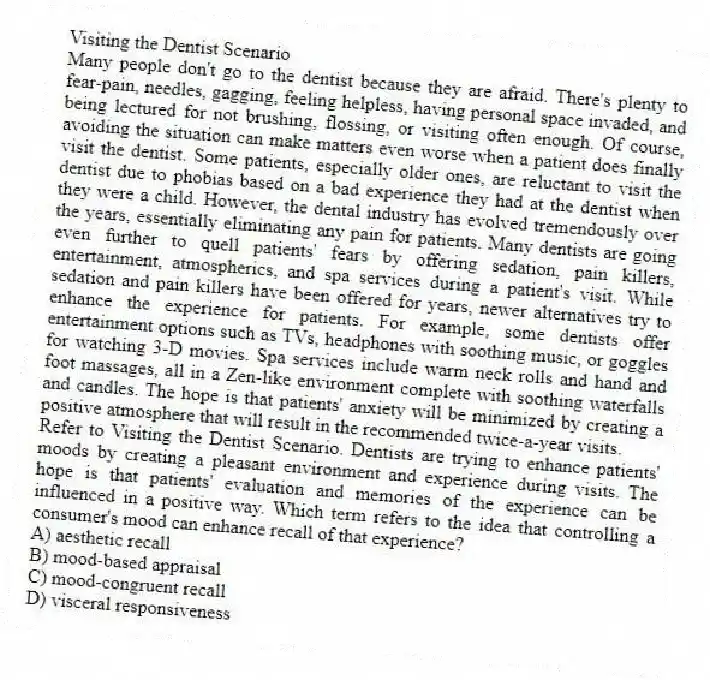
Visiting the Dentist Scenario
Many people don't go to the dentist because they are afraid. There's plenty to fear-pain, needles, gagging, feeling helpless, having personal space invaded, and being lectured for not brushing, flossing, or visiting often enough. Of course, avoiding the situation can make matters even worse when a patient does finally visit the dentist. Some patients, especially older ones, are reluctant to visit the dentist due to phobias based on a bad experience they had at the dentist when they were a child. However, the dental industry has evolved tremendously over the years, essentially eliminating any pain for patients. Many dentists are going even further to quell patients' fears by offering sedation, pain killers, entertainment, atmospherics, and spa services during a patient's visit. While sedation and pain killers have been offered for years, newer alternatives try to enhance the experience for patients. For example, some dentists offer entertainment options such as TVs, headphones with soothing music, or goggles for watching 3-D movies. Spa services include warm neck rolls and hand and foot massages, all in a Zen-like environment complete with soothing waterfalls and candles. The hope is that patients' anxiety will be minimized by creating a positive atmosphere that will result in the recommended twice-a-year visits.
-Refer to Visiting the Dentist Scenario. Dentists are trying to enhance patients' moods by creating a pleasant environment and experience during visits. The hope is that patients' evaluation and memories of the experience can be influenced in a positive way. Which term refers to the idea that controlling a consumer's mood can enhance recall of that experience?
A) aesthetic recall
B) mood-based appraisal
C) mood-congruent recall
D) visceral responsiveness
Correct Answer:
Verified
Q121: Describe a schema-based affect based on a
Q122: Define autobiographical memory and describe one of
Q122: Discuss the ways in which consumer emotions
Q124: Compare and contrast the different types of
Q126: Compare and contrast two self-report measures for
Q127: Define cognitive appraisal theory and name and
Q129: Define aesthetic labour and explain why it
Q130: Describe Maslow's hierarchy of needs and give
Q130: Explain how utilitarian motivations differ from hedonic
Q131: Explain how motivation drives human behaviour and
Unlock this Answer For Free Now!
View this answer and more for free by performing one of the following actions

Scan the QR code to install the App and get 2 free unlocks

Unlock quizzes for free by uploading documents